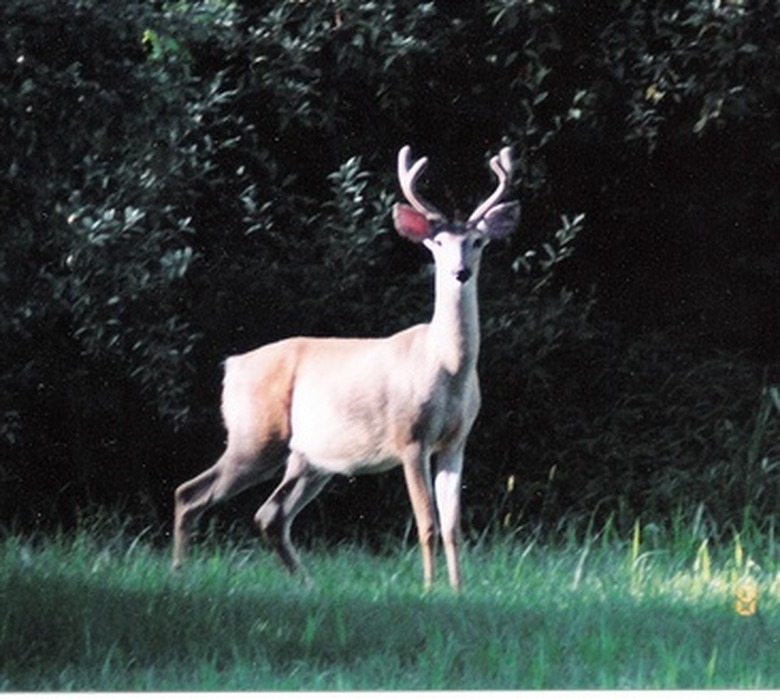Cosmos Flowers & Deer
A frequent invader of suburban gardens, deer wreak havoc on flowers and plants. Cosmos are annual, colorful flowers that deer usually avoid and can be used in landscapes to repel deer. When used as a border, cosmos prevent deer from entering landscapes where other, more attractive plants grow.
Significance
According to the North Carolina State University Cooperative Extension, deer consume up to 4 percent of their own body weight. In suburban areas where development has encroached on their feeding grounds, deer use well-watered, ornamental plants for nutrition. While deer can damage flowers at any time throughout the year, late spring, late summer and fall are heavy feeding times, according to the Oklahoma Cooperative Extension Service. Damaged plants can be identified by jagged, torn leaves caused by deer using their lower incisors to eat garden flowers and plants.
- A frequent invader of suburban gardens, deer wreak havoc on flowers and plants.
- Cosmos are annual, colorful flowers that deer usually avoid and can be used in landscapes to repel deer.
Considerations
Deer do not seek out plants with heavy odors, rough foliage or bitter taste, according to the University of Georgia Cooperative Extension. Native plants that don't require extra fertilization or rich soil are also deer-resistant. Cosmos are native to Mexico and the warm, Southern regions of North America. Self-seeders, cosmos tolerate dry conditions and do not require rich, fertile soil. Cosmos have thread-like leaves and stiff stems and are generally overlooked by deer in search of well-fertilized annuals. In borders, cosmos can be paired with other deer-resistant flowers including zinnias, lantanas and salvia.
Types
Cosmos bipinnatus can grow up to 4 feet tall and have bowl-shaped flowers of pink and red. In warmer areas, Cosmos bippinatus grow along roadsides and in fields. Cosmos sulphureus can grow to 6 feet tall but should not be grown in fertile soils where they will flop over. Cosmos sulphureus features yellow and orange flowers on hairy stems. Chocolate cosmos produce brown blooms, can reach 3 feet tall and attract butterflies. Chocolate cosmos can be grown as perennials in warmer regions.
- Deer do not seek out plants with heavy odors, rough foliage or bitter taste, according to the University of Georgia Cooperative Extension.
- Cosmos sulphureus can grow to 6 feet tall but should not be grown in fertile soils where they will flop over.
Warning
Unfavorable winter conditions lead deer to eat flowers they wouldn't choose under normal circumstances. According to the University of Georgia Cooperative Extension, some deer will eat young buds or new plantings of a normally deer-resistant flower but avoid the mature version. Some plants can be avoided by deer in one region but destroyed in another area. Cosmos are listed on the Oklahoma Cooperative Extension Service's list of annual plants that are rarely damaged but the University of Georgia's Cooperative Extension suggests that cosmos receive extra protection from deer in Georgia.
Methods
Other methods of repelling deer are available, including fencing and chemicals. An effective fence should be at least 10 feet tall and built so that deer cannot crawl underneath. Chemical repellents can be purchased or made at home; home remedies include hanging bars of soap or bags of human hair around the garden. While these methods can be successful, fencing is unattractive and chemicals may include ingredients like rotten eggs or ammonia which smell bad and can detract from the landscape.
- Unfavorable winter conditions lead deer to eat flowers they wouldn't choose under normal circumstances.
- Some plants can be avoided by deer in one region but destroyed in another area.
